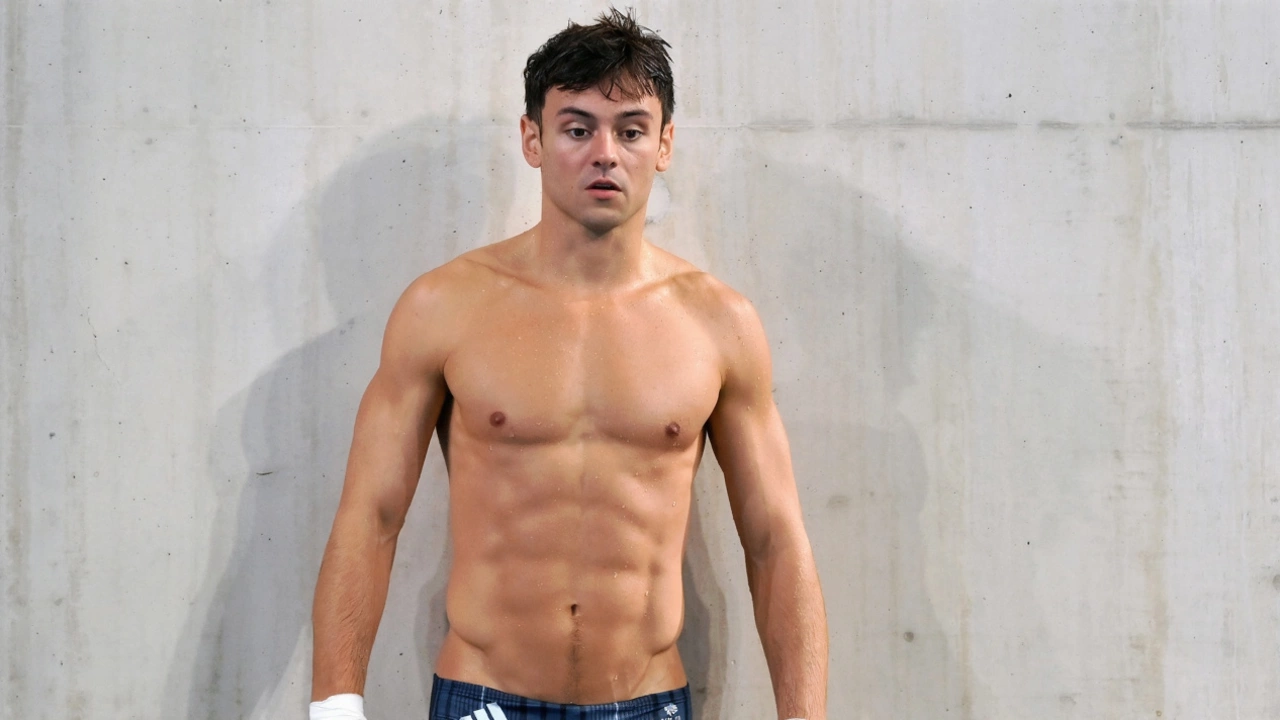When Tom Daley, Olympic diver and British athlete announced his new training plan, fans expected a sleek, low‑impact routine. Instead, the 30‑year‑old, fresh from his retirement after competing at the 2020 Tokyo OlympicsTokyo, Japan, is building functional strength to keep up with his toddlers.
The program was detailed by Brett Williams, senior editor at Men’s Health, a title under Hearst Communications. Williams, a NASM‑CPT and performance‑enhancement specialist, spent weeks observing Daley’s transition from the board to the gym.
From Diving Board to Weight Room
During his four‑Olympic‑cycle career—Beijing 2008, London 2012, Rio 2016, and Tokyo 2020—Daley’s training emphasized leanness. The sport demanded sub‑70 kg (154 lb) body weight, with British Swimming British Swimming enforcing strict weight‑management protocols. “I was always avoiding hypertrophy,” Daley told Men’s Health. “Now I can finally lift heavy without worrying about my dive scores.”
Living in London, England, he needed a routine that fits around school runs and bedtime stories. The result is a three‑to‑four‑day weekly plan designed for functional strength rather than aesthetic bulk.
The Full Routine Breakdown
Tom Daley workout kicks off with a mobility‑focused warm‑up:
- Chinese Plank March – 10‑12 reps per leg
- Hip Circles – 10‑12 reps per leg
- Assisted Hip Airplane – 10‑12 reps per side
Then the main circuit, performed for three sets of ten reps each (unless noted), targets major muscle groups while mimicking everyday movements:
- Single‑Leg Dumbbell Snatch – 10‑12 reps per side
- Front Foot‑Elevated Reverse Lunge – 3 × 10 reps per leg
- Kettlebell Squat to Box Jump – 3 × 10 reps
- Rotational Landmine Press – 3 × 10 reps per side
- Side Plank Rotational Rows – 3 × 10 reps per side
- Hanging Leg Raise – 3 × 10 reps
Daley also launched a supplementary core series on YouTube titled “#DaleyRoutine.” In a quick‑fire video, he says, "No equipment needed, so no excuses!" The playlist offers a five‑minute ab circuit perfect for a kitchen counter or a park bench.
Why the Shift Matters
Beyond the obvious desire to lift his kids—Robert (born May 27 2018) and Phoebe (born Jan 23 2023)—the routine addresses long‑term musculoskeletal health. Years of repetitive dives can tighten the hip flexors and strain the lumbar spine. The hip‑mobility drills and rotational presses counteract those imbalances.
Fitness coach Sarah Mitchell, a certified strength‑and‑conditioning specialist, explains, "Transitioning from a sport that penalizes mass to one that celebrates functional strength is a smart move for longevity. Daley’s program hits the posterior chain, core stability, and unilateral strength—exactly what a dad needs."
Expert Take on Functional Training
Sports physiologist Dr. James Patel of London Sports Institute adds, "The landmine press and single‑leg snatch are excellent for developing anti‑rotational core stability, a key factor in everyday lifting and injury prevention. Daley’s focus on unilateral work mirrors the asymmetrical forces he experienced underwater, making the transition smoother."
Williams notes, "What’s fascinating is how Daley respects the sport’s discipline while shedding the weight‑restriction mindset. He’s essentially re‑programming his neuromuscular system for new goals."
What’s Next for Daley?
Daley plans to keep the regimen flexible, swapping in swimming laps for active recovery and occasionally joining group classes at a local gym in Plymouth to stay connected with his roots. He hinted at a possible partnership with a British sports‑wear brand for a limited‑edition training line, though details remain under wraps.
As the routine gains traction on social media, the hashtag #DaleyRoutine has already amassed over 150,000 views. Parents across the UK report feeling more confident tackling daily chores, and a few even claim the regimen helped them break through plateaus after years of conventional gym work.
Frequently Asked Questions
How does this routine help new fathers stay fit?
The program emphasizes functional movements—single‑leg lifts, core rotations, and hip mobility—that translate directly to everyday tasks like lifting toddlers, carrying groceries, or bending to tie shoes. By training in short, equipment‑light sessions, busy dads can fit workouts into nap times or after bedtime without needing a full gym setup.
Is any special equipment required?
Aside from a pair of dumbbells, a kettlebell, a sturdy box or platform, and a landmine attachment (or a barbell in a corner), the core circuit can be done with bodyweight alone. Daley’s YouTube #DaleyRoutine segment is deliberately equipment‑free for maximal accessibility.
How often should the workout be performed?
Daley recommends three to four sessions per week, allowing at least one rest day between heavy lower‑body days. This frequency balances strength gains with recovery, especially for parents juggling unpredictable schedules.
Can this routine replace traditional cardio?
While the circuit stimulates the heart, Daley pairs it with separate cardio sessions—like brisk walks, cycling, or swimming—to maintain cardiovascular health. The strength focus ensures muscle endurance, but a balanced program still needs dedicated aerobic work.
What age range can safely follow this program?
The routine is scalable for adults 18‑55 with a baseline of fitness. Beginners should start with lighter weights and possibly reduce sets to two, while seasoned athletes can increase load or incorporate supersets for added challenge.


